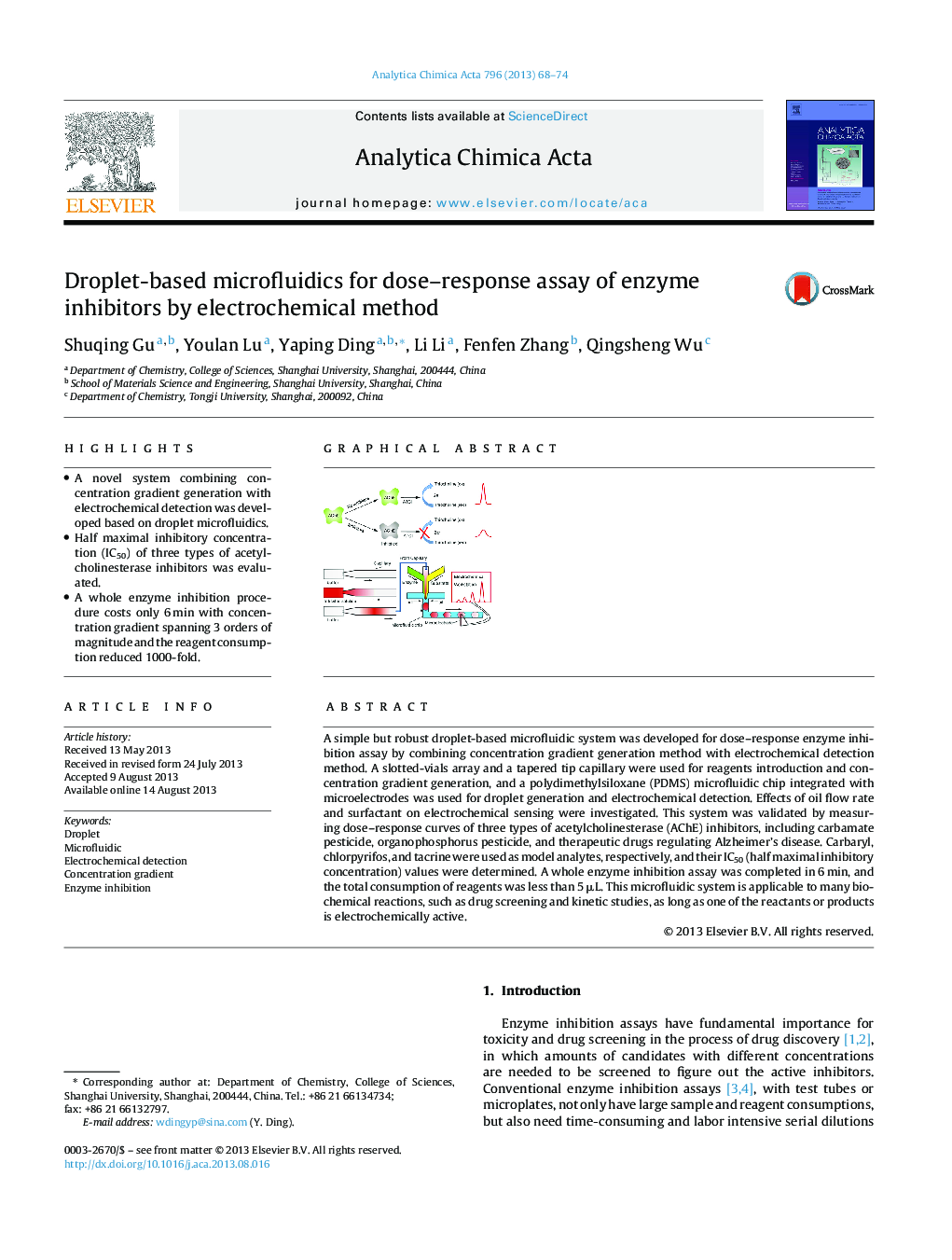| Article ID | Journal | Published Year | Pages | File Type |
|---|---|---|---|---|
| 1165584 | Analytica Chimica Acta | 2013 | 7 Pages |
•A novel system combining concentration gradient generation with electrochemical detection was developed based on droplet microfluidics.•Half maximal inhibitory concentration (IC50) of three types of acetylcholinesterase inhibitors was evaluated.•A whole enzyme inhibition procedure costs only 6 min with concentration gradient spanning 3 orders of magnitude and the reagent consumption reduced 1000-fold.
A simple but robust droplet-based microfluidic system was developed for dose–response enzyme inhibition assay by combining concentration gradient generation method with electrochemical detection method. A slotted-vials array and a tapered tip capillary were used for reagents introduction and concentration gradient generation, and a polydimethylsiloxane (PDMS) microfluidic chip integrated with microelectrodes was used for droplet generation and electrochemical detection. Effects of oil flow rate and surfactant on electrochemical sensing were investigated. This system was validated by measuring dose–response curves of three types of acetylcholinesterase (AChE) inhibitors, including carbamate pesticide, organophosphorus pesticide, and therapeutic drugs regulating Alzheimer's disease. Carbaryl, chlorpyrifos, and tacrine were used as model analytes, respectively, and their IC50 (half maximal inhibitory concentration) values were determined. A whole enzyme inhibition assay was completed in 6 min, and the total consumption of reagents was less than 5 μL. This microfluidic system is applicable to many biochemical reactions, such as drug screening and kinetic studies, as long as one of the reactants or products is electrochemically active.
Graphical abstractFigure optionsDownload full-size imageDownload as PowerPoint slide
